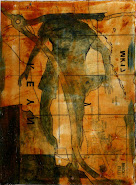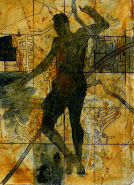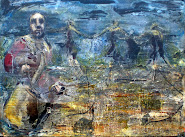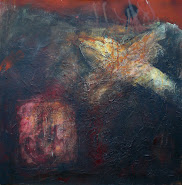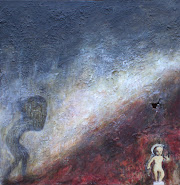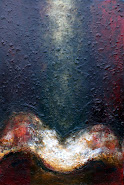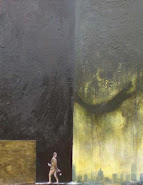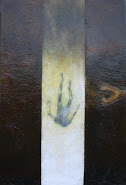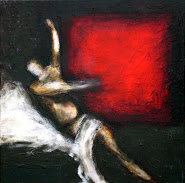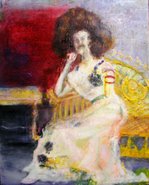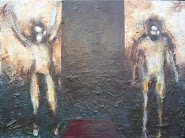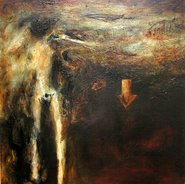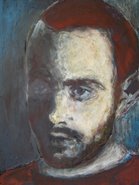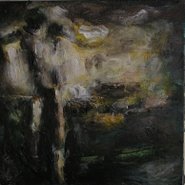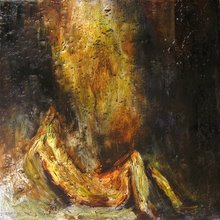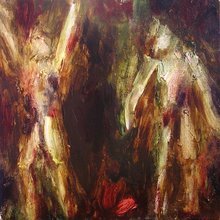

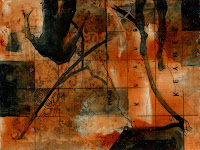

A place for Tom de Freston and Andrew foulds to display their artwork and discuss related issues surrounding their practise.
















 so these are the changes again, in summary i think that the background to the queen is an improvement, however i just can't make up my mind about the reddening of the pillars and the whitening/makeup of the queens face. what do you think, my minds all over the place at the min and i need a critical comment from someone i trust.
so these are the changes again, in summary i think that the background to the queen is an improvement, however i just can't make up my mind about the reddening of the pillars and the whitening/makeup of the queens face. what do you think, my minds all over the place at the min and i need a critical comment from someone i trust.
Before I start: If you are looking for older lectures then go to the side of the blog and scroll down to the bottom of the images. There is a list of past blog posts there. Amoungst those, perhaps in older blogs, should be lectures 1 and 2. (lecture three, by its nature, was not written up)
As of next week I shall be able to upload lectures onto the college intranet. You will therefore be able to get hold of them with images attached.
A couple of perople have asked if it is ok to print the lectures out to stick into folder/journals etc. This is fine if anyone else wants to do so.
Where Painting is Today- the privileged position of the post Greenbergian practitioner
Firstly, apologies for some repetition from previous lectures. The repeated information is critical to today’s lecture, so is needed to ensure you had remembered it. If you are reading the first half of the lecture and it all sounds familiar then it is probably best to skim read and get to the second half. That is the crux of the argument in this case.
Mission Statement.
Today’s lecture will look to address the following:
- Our position in relation to the doctrine of what went before and to realise how this position is not as unique as we would like to believe.
- The notion that there is a clear classical and modern narrative in painting; the later being counter to the former, which puts us in a unique position to take from both.
- To conclude with a search for more continuous histories.
Context:
First we need to consider the narratives we have been told. What have been led to believe paintings history has been?
Classical: the painting as an object which represents something outside of itself.
Modern: the painting as an object which is totally self referential
Will briefly consider the various facets of these presumptions:
1) Spatial-The desire to go beyond and then back to the surface
2) Material- From paint as a mimetic tool to a self reflexive attention
3) The democratisation of subject matter
The journey beyond and back to the surface
Most Histories of art imply that there has been a clear and logical spatial progression in painting. Any retreat from the pathway is generally seen as regressive. The story told is of a return journey.
The original journey: That artists initially perfected the illusion of going beyond the canvas, creating a sense of depth.
This is most clearly articulated and evidenced in Vasari’s Live of the Artists. Through the three stages he illustrates how artists developed a sophisticated understanding of geometry and the creation of an illusion of depth. Albertti’s ‘della pictura’ is pinpointed as a key moment in the arrival of a painting as a convincing window onto another reality. From Botticelli, through Massacio and then to Raphael the development of a new spatial field is created; from static frieze like dynamics to various planes of depth and forward to a seemingly natural and dynamic movement through space.
An artist like Tintoretto, represents the logical extension of this point. He creates deep perspective holes through the use of architectural geometry. His figures tends to be dramatically set in receding space, with heavy foreshortening demonstrating his Michelangeloesque powers of spatial illusion.
The return leg:
GREENBERG QUOTE
Implies that artists realised the need to celebrate paintings independent truths, one of which was flatness; so gradually moved from the illusion of depth to the celebration of two dimensions and object-hood.
As we saw in a previous lecture, this is clearly explained by Greenberg. He maps a path from Manet to Pollock which sees a systematic re-remembering of the surface and its flatness. We start with Manet’s flattening of form through the lose of half tones. Then through impressionism and Cezanne we move to Cubism’s remarriage of form and surface through a web like abstraction of image. From here it is seemingly only one step to Pollock and his drips which seem to sing a song to the surface, dancing over and around it in hypnotic rhythms. The desire to rid us of any sense of depth is supposedly totally fulfilled in artists like Kenneth Noland.
The Medium
Paint as a singularly mimetic tool
Mimetic wont dwell on this too long as, again, we dealt with it in some detail in the first lecture. I want to consider the notion that prior to the 19th century painters saw paint as an entirely mimetic tool. That for all artists the substance was subordinate to the image represented.
This is again clearly espoused in Vasari’s doctrine and the Central Italian ideal of ‘Desegno’. Yet it roots spread further, before and after, this particular moment. Pliny told many anecdotes of the artists singular attention in mimesis. The story of Zeuxis painting grapes, which were so real the birds tried to eat them, is perhaps the epitomy of this ideal. Plato’s rant in ‘Republic’ about the two step removed nature of art shows how people believed that paint had no autonomy prior to the early seeds of abstraction in artists like Turner.
Paint as paint and nothing else
Again we return to the formalists, and again to territory we covered in week one. There is no need to cover the ground again in any extensive detail. It is crucial to remember though, that for many formalists, works of supposed abstraction are about nothing outside of themselves. In terms of the medium it is paint for its own sake, a total celebration of the substance. They argue for a celebration which is totally singular, paint which looks no further than itself. The number of artists to which this claim is applied is extensive, taking in virtually anyone from Turner to today.
Subject Matter
What is implied is that there is a gradual shift from high and mighty external subject matter to totally internal subject. This is the story of the democratisation of subject matter. It does not quite have the same return journey feel of the previous two headings, but follows, we are told, a linear evolution from external to internal content.
A brief summary of certain moment in such a journey is useful at this stage: (for a good extensive account go to Gombrichs ‘The Story of Art’)
Without going into depth it is fair to say that the Renaissance imbedded an approach to subject matter in artists that survived, fairly unchallenged, until the late 1700’s. Artists generally would draw inspiration from a select range of sources- the bible, classical and modern literature and grand historical narratives. It was what Diderot would later call stories of vice and virtue, the need for art to deal with high minded moral subjects. The approach, in style and meaning, to the subject matter changed greatly, but the same stories tended to be recycled. So if it was not a scene from the life of Christ it would be some Ovidian tale or Roman history.
The political, social and philosophical unease of Europe in the later 18th Century seems to have been the seed of a drastic shift in subject matter over the next 150 years. Political and monarchal systems of rule were challenged, the singular belief in a particular religion was doubted and social structures were reassessed. All of these seem to be leading factors in the shift.
We only need to look to the French revolution to see the effect of such events. When David painted ‘Marat at his last breath’ 1793, he gave a contemporary political figure the heroic status and artistic treatment previously reserved for some mythological or historical character. The sheer power and importance of the present, of the revolution, forced him to no longer locate his creative attention in the past, but to deal with the very drama of the present. The shift was forced upon him.
The journey continues through artists like Gros and his incredible Napoleonic patronage; which deserve a lecture no there own. Then we move to Gericault and his unique brand of proto realism, where we took scenes from the everyday and raised them through the use of high art devices. His ‘Raft of the Medusa’, so often misunderstood, is worthy of our extensive attention; just not in this particular context. His realism also stretches far beyond this masterpiece.
Throughout Europe we are then told there is a shift from a Neo Classical style to a Romantic style. The shift seems to fit into the democratisation of subject matter. Artists like Delacroix look for new literary sources, no longer necessarily moralised scenes by a different, more poetic in its scope, drama. A discussion of the period in such terms (Neo Classical and Romantic) however is incredibly un-useful, but perhaps necessary when in need of vast generalisations.
More useful is to give some attention to individual artists, like Goya. His unique brand of art single handedly dragged us towards the present and equally as importantly the grime and disgusting underbelly of our times. His ‘Disasters of War’ series is still perhaps the most frank and honest account of warfare in the history of art. No punches are held and decorum and idealisation are left as massacred as the bodies depicted.
The next noticeable shift comes in a group of artists who historians label ‘realists’. The tendency of these artists tends to be to source subjects from everyday life and raise them through high art devices. The self and historically proclaimed master of the movement is Courbet. Paintings of unknown people’s funerals or stonebreakers at work are typical of his work. The lowly raised to the profound, the specific to the general through technique and compositional organisation. Consider the Davidian arrangement in ‘The Stonebreakers.’ In France Daumier and Millet represent the other two most celebrated artists of this movement, if we can call it that. Millets paintings often focus on rural labourers, given a romanticised glow and Michelangeloesque solidity. Daumier arrives slightly before the other two, already busy at work in the 1930’s. His sculpted caricature busts of politicians are an early equivalent to spitting image. His witty and cutting cartoons are more dangerous in content than anything private eye has done. When he eventually turned to painting he depicted the fringes of society, the working class carriages in trains, proletarian and marginal figures such as clowns and washerwomen. He is just the kind of artists Baudelairre speaks of in ‘The Heroism of modern Life’.
From here it is a short step to Manet and early impressionism. Prostitutes, parks, train stations, the rise of the city, the margins and underbelly of society. All are given the fully treatment of these painters virtuoso technique. From Goddesses and allegories we have arrived at prostitutes and social commentary.
For me Cubism was a logical extension, in terms of subject matter, of this point. Café culture, musical instruments and Parisian life in general (if we include, as we should, the Salon Cubists) are all centralised and subjected to the formal innovations of the artists.
The next leap into the unknown is Duchamps ‘Fountain’ 1917. By merely re-contextualsiing a ready made object he turns a totally functional object into a non functional conceptual and aesthetic experience. The lowest objects of society are transformed into art without the aid of craft or technique, by a merely conceptual transformation through spatial/philosophical context.
If Dada takes use to an illogical conclusion of one logical path, then art povera takes us to another. Artists like Tapies and Burri use the most humble of materials to construct their works. Through their many devices the profane is raised to the sacred or the humble to the profound. Sand, plastic, honey, chairs etc all become signifiers or something more important. It is the final democratisation of this particular facet of subject matter. Anything goes, nothing is sacred. This pervades all art from then on, through to do. Consider Emin, Hirst and the other YBA’s. The boundaries have disappeared.
What particular interests me for today’s discussion, however, is another strand of development in the democratisation of subject matter. It follows the same path up until the end of Cubism in the mid 1925’s (dates vary depending who you believe and what you believe Cubism is.)
This is the subject matter and content of abstraction. We are told it is totally internalised; that the abstract work is only about formal values, line, colour, composition and tone. It’s about its independent properties and a total lack of association to anything outside of itself. For Frank Stella ‘What you see is what you see’. Others artists like Noland wanted to remove the personal and emotive elements of painterly expression and found a way to do this through hard edge designs and a pouring of paint which removed the authors touch. It was an attempt to create a totally autonomous, self sealed entity, which in no way seemed to suggest anything beyond itself.
The privileged position of the post Greenbergian artist:
The various oppositions between what painters have been focused on throughout history provide the contemporary painter with a supposedly unique position. It is said we are the first artists to be able to consciously take on board the developments of abstraction and representation. That we can play between flatness and depth, that our use of the medium and subject matter can be self reflexive and offer up the potential for suggestions beyond itself.
Theoretically it is aligned to the development of semantic though. That we are the first artists able to realise that painting can be a signifier with a multiplicities of significations. That is that the painting as a sign can be plural, not singular. This is seen as being a unique occurrence of post modernism and pluralism. It allows for an elastic relationship between form and content, between the self reflexive and metaphysical, between the specific and the general.
I want to show that it is not. I do believe in change. Painting is defined by its surroundings, no doubts. We are very different painters to those who came before us. But the evolution of painting is far more complex and subtle than any linear progression or history implies.
I want to suggest that there are certain continuous histories in painting. Certain things which have always been present and always will be, and that these things are the very things we are told are unique to our historical position. I want to deconstruct the myth of paintings history. Whilst much changes, there are certain things which remain constant, which always underlie us. Certain things are intrinsic to painting; however much we try and change it with theory and literature, painters themselves are aware of this.
The search for a more continuous history
I want to go through the same categories I looked at before, but to show how they are false.
Flatness and depth- a two fold relationship
Without doubt there is a renewed consciousness of post 1960’s painters of the ability of painting to appear both flat and suggest depth, and sit suggestively on the precise of both. We only need to Look to Frank Stella and Bridget Riley for two notable and exceptional examples. Yet I want to show that before this point artists were not as singular as suggested in their spatial awareness.
I want to show how this is not something unique to now but is instead something inherent in painting. All painters have always been aware of a painting as a flat plane which also has the potential to give across the illusion of a space beyond. This has always been true and been dealt with, what has changed is how we can utilize this fact.
Pre Modernist celebration of the surface:
I quick reminder of the artists we looked at the manner in which they celebrate the surface (this is closely aligned to a celebration of the paint itself, which I shall deal with later)
Della Francesco- The Baptism of Christ
We looked at detail at this work in week one. We considered his appreciation of surface geometry to create a scene of quiet, pray like calm.
Titian: Padua Fresco- ‘Miracle of the speaking babe’ 1911
One of many works in which titian uses architecture to divide the space into separate parts. More often than not the parts formed are squares. He would have been aware of nature of the square space, which tends to restrict any sense of depth. It ensured that whilst distance could be described our eyes remained focused on the foreground activities of the figures. He keeps us purposely locked onto, rather than disappearing through, the surface.
Veronese- architectural plays
To pick out any one work would be foolish. If we look to this 16th Century Veneitan painter we see a more general appreciation of the surface on which he paints. He does create three dimensional stages on which to set his action. This stage is often set against a backdrop of architecture. The verticality of the architecture is often organised to create horizontal rhythms across the surface. The structural melody sees a sophisticated interplay between alluded depth and surface composition. He is intimately aware of the two fold relationship between the two spatial dimensions, the real and the imaginary.
Poussin- Death of Germanicus
Go and spend, if possible, an hour or two in the Poussin room in the National Gallery. Look how he develops interplay between flatness and depth. Consider the way he divides the space up into rectilinear planes. Planes which suggested depth but which also reassert and echo the frame, thus remembered its flatness.
Look at his use of figures. They exist in space dynamically, move in and amongst each other, backwards and forwards. Yet beyond this he creates rhythms which sit on a flat surface. When he deals with dance the figures legs and arms often decorate the surface with visual melody and rhythm, as if he is a conductor. Its as if he is constantly aware of how they exist in the imagined three dimensional space and the actual two dimensional space. The play between the two creates a sense of convincing narrative as well as a sub plot of figural melody.
Ingres- Riviere portraits 1805
Play of lines across the surface.
Female owe a debt to the Raphael Madonna of the Chair (a sketch of which appears in the portrait of M Riviere on the table)
Raphael and the curved frame-Adheres to nature but executed with an awareness of the curve of the frame. Forms placed and lines constructed to echo the rhythms of the curved edge.
Ingres- takes up harmony between internal form and curved edge.
Mme Riviere- series of curves and counter curves which mirror the edge. Right hand, upwards, shawl, neck- left edge. Shawl and dress laid across her lap- right edge.
Mme Riviere- arched top- product of the two parent canvases. Scarf- wrapped around, not sculptural depth but a curving pattern across the flat surface.
Debt to the graceful line of Raphael- further disjunction from its mimetic counterpart. Raphael- selective imagination composed to harmonise form to frame. Ingres happy to destabilise line from its mimetic role in order to accentuate the play of abstract values across the surface. Observed fact open
Abstract painters who have been cast off as have a singular interest in flatness:
Cubism
We have looked at a number of the relevant works here in much depth, so wont go over this ground again in to much detail.
The two fold nature of much of the work is not denied. What is claimed, however, is that it is part of the bridge between two moments. Of a link back to the past and the illusion of depth and a look forward to the future and a celebration of flatness. In fact it is a celebration of a more continuous truth, as I hope we will have made clear in this lecture.
Pollock
The same is true when we get to the end of the opposing monolithic theory in the History of Art. Greenberg spoke about a clear move towards flatness, and Pollock was supposed to be the pinnacle of this. Yet look at one of his great works such as ‘Lavender Mist, No 1’. They play on a spatial dichotomy. This goes against the notion of him as the icon of a high Modernism which espouses a dogmatic and singular aesthetic of flatness. In ‘Lavender Mist, No 1’ (Fig. 23) the rhythmical drips do create a sense of interlocking pattern dancing over the surface, celebrating its flatness. Equally, however, the lines create a web-like matrix which seems to pulse through the plane of the canvas. The series of lines are in a constant discussion between surface decoration and depth.
Rothko
They throb. The play between flatness and depth, between nothingness and the infinite is crucial to there meaning and our experience of the work. Through these spatial plays, between ultimate poles, they deal with the sublime. They are the antithesis of the cold flat aesthetic they are often aligned with.
Frankenthaler
flat but also vast planes that suggest the infinite- between total suppression of space and total mass of space- like Rothko- truly sublime. The reason all these artists paintings work is that they play between the two spatial referents. If they were singular in their focus it would not work. Even in Noland there is a colouristic pulse between the surface and possible depth.
THE MEDIUM
The Semiotics of paint
Painters have always been aware that paint is a signifier with a range of significations. The sign is not singular and never has been. It has never been singularly mimetic or self reflexive. Beyond this is also has the capability to reference other dimensions. It can be expressive, decorative, symbolic and carry spiritual weight.
Paint as a mimetic tool
Where the medium itself is central, not subordinate, to the mimetic process. A painterly process.
To summarise this section- I am looking at works of art where the painterly process and the medium itself is central to the discovery of image and form. The substance and the form, the process and the image are symbiotic.
When considering paint as a mimetic tool people still seem to buy into the Vasarian doctrine. Without traipsing over old ground Vasari states that Design, as a masculine and intellectual facet of the arts’ it’s the solid base of a painters profession. Colour (paint) is seen as the final decoration of the solid linear design. As such the paint itself is not, according to the ‘gospel’ where the image is found. The Venetians are credited with being the school which moved away from this. It has been cited as a revolution brought about by the conditions of their practise. The geography of Venice meant Oil paint on Canvas became the norm. From here artists like Bellini and particularly Giorgione moved towards a new mode of practise in finding image. They seem to have moved in a direction suggested previously by the writings of Da Vinci. It would be interesting to know if there was any awareness of his theoretical and occasionally practical precedent. Before trying to deal with the exact evolution it is important to realise the restrictive nature of a discussion of this kind. To reduce the History of art down to this polemical dichotomy is makes things easier to understand but is ultimately false. There was a clear Central Italian Venetian divide, and it was evident in both the work and the theorists. For Central Italy read Desegno and for Venice read Colorito. (The verb to colour not the word colour. The difference between the locations is not a case of colour but a case of process, with premeditated design being one and the discovery through application the other) However singular Vasari is it is clear the divide is less black and white then he makes out. Even Michelangelo, Vasari’s demi god, shows a kind of painterly appreciation in his late drawings and sculpture. In his unfinished sculpture we see he actually tackling the stone, searching for the figure from it’s very substance. He speaks eloquently about it in his poetry (if my memory serves me correctly). In his late Crucifixion drawings the pencil seems to continuously follow the body of Christ in some kind of hypnotic hymn. He seems to search for the form in some meditative process. I digress but merely to stress any generalisations are inappropriate. It perhaps enhances the fact that all, even the most clearly design based of artists follow a mimetic process which succeeds because of rather than in spite of the medium. For Titian, as for those who follow, the form is found from the medium itself, rather than form constraining the medium; it a case of priorities. We associate this aspect of Titian to his late career, but it is in evidence very early on. In his ‘Concert Champetre’ 1509-11 (often attributed to Giorgione, incorrectly I believe) the glass jar held by the nude on the left is evoked with a couple of dashes and a wash of translucent paint. These marks are all that is needed to give an impressive sense of solidity and transparency. It is an economy of means which he would spend the rest of his career developing and perfecting. For me Titians process reaches its peak in his evocation of flesh. Whilst many of the clichés with Titian are obtuse the fact he delighted in flesh and its evocation holds true. As we move throughout his career there is a tendency towards the destruction of plastic solidity. Under drawing becomes progressively more schematic, edges become less defined, atmosphere and form begin to coexist. In his uncompleted epitaph ‘Pieta’ 1570’s we see the body of Christ constructed from a series of broken brush strokes. Form seems on the verge of breaking into light and light and substance seem to transmute into form in front of our eyes. It is a gradually less descriptive and more poetic approach. Titian delights in the very properties of the medium and their ability to stand for the alluded form, texture and image. The oily sensuous properties of oil paint are delighted in and used to convey the comparable qualities of flesh. The physicality and tactile nature of the substance is celebrated in a fleshy delight. Paint is pulled around, the surface caressed; the act seems to be actively searching for the moment resolution is found. In the final works the paint does not just seem to stand with paint but seems alive, fulfil the classic miraculous anecdote that his paintings only lacked breathe. This feeling is created by the way colouristic and textural vibrations are created through and across the multiple layers of paint. It creates a sense that the flesh is breathing, moving, alive. The sense of life is found in the paint itself and its very application. Similar sentiments could be applied to a history of artists who seem to have directly spawned from the Venetian master. Rubens is a direct descendant, actively copying numerous Titians, absorbing his techniques through osmosis. Then follows Velasquez, Rembrandt, Reynolds, Goya, Delacroix, Courbet, Manet, Turner, Rothko, De Kooning, Aurbach, and more recently I spoke at length in my dissertation about Brian Graham being one of many current painters who continue from this past. Self refelxiveBeyond Mimetic ends artists have long celebrated paint for various other meanings. The most obvious, to eyes trained on 20th Century painting, of these features is the self referential and decorative. The kind of features we normally associate primarily to ‘abstraction’. There seems to be no need to discuss the lists of 20th Century artists who celebrated the decorating of the flat canvas, who delight in the medium itself. My point here is to demonstrate aspects of painting which are permanent and which are not necessarily normally attributed to artists of a certain period. What I want to consider is the range of artists before abstraction who had a clear fascination with the spreading of colour on a two dimensional support, artists for whom that was a key ingredient, in its own rights, in the process. It is of course natural that it should be. All painters take a colour substance and push it onto a flat surface, thus all painters instinctively must take some delight in this actual process and its results, in the manner in which substance and colour hold to, sit on and play off the support. This is not and cannot be a delight only held by artists after 1900. Again (due to lack of comprehensive knowledge) I will begin my discussion with the Venetians of the 16th Century. The context of the Venetians interest in the paint for its own merits is obviously tied up in the same conditions of practise and approach to their art that formed my discussion of Titians mimetic process. For these artists meaning was found in the medium itself. Titians fascination with the paint itself and its decorative properties is clear in his use of colour and medium. Throughout his career he shows awareness for the decoration of colour over the surface. Consider his ‘Assumption’, that great spread of red. It has a clear dramatic narrative aim; it is the theatrical device which takes our eye from the profane robes of the apostles through the rising Mary and up to god the father. In dragging our eye up the verticality of the mammoth work it replicate her dynamic ‘Assumption.’ Whilst its intention is for a narrative end it shows an acute awareness and celebration of colour on the surface. In Titians later work the very presence of paint begins to be celebrated in a proto impressionistic manner. This is a common thread in all the painters I discuss. As we move forward in time they feel more and more liberated and happy to fully reveal the medium. Out of all the artists I can think of it is perhaps Veronesse and then Delacroix who seem to move noticeably foresee the picturesque brilliance of the impressionists. In Veronesse’s work colour seems to be systematically placed across the surface. He seems to unite his various warm and colds and lights and darks and then almost like a composer ensure that they are scattered evenly across the surface. It is far more subtle and sophisticated than this crass explanation describes.
Delacroix, due to his time, is able to take a similar advance further. It is known he was thinking of artists like Veronesse when he made his breakthroughs. One of the big moments for Delacroix was his trip to Morocco. There the intense light made him realise how shadows and blacks in general, were filled with colour. He started to see the complementary of the local colour in its shadow. In works like ‘Women of Algiers’ we begin to see him break colour across the surface, to detach it from its contours. There are numerous great examples of how he does this more precisely, but with Lee Johnson already having described it so beautifully in his small book I feel no need to repeat with a far inferior use of words. What most interests me about these artists, and other similar ones, is what I consider to be a musical use of paint. They seem to use the substance and colour in such a way as to create rhythms, melodies and harmonies across the surface, each individual part like an instrument in an orchestral production. It reaches its peak when Monet is at his best but still reverberates in Rothko and Pollock and even Ian Davenport, each of who play very different tunes. The manner, in which you apply, density, pressure, texture, variety, size all affects the musical experience. The painter is not the musician, but the conductor or even the composer. You don’t paint at a certain speed in some contrived notion that that we create a certain rhythm. You have to place your notes (colour) and beats (paint) in a construction which then allows the eye to play them. Harmony, tension, speed can all be conveyed by an almost mathematical application. All of these elements are obviously used to support, if successful, the central narrative or subject. Yet the fact is, like with pure abstraction, they have autonomy, they celebrate themselves as well as looking beyond themselves for some other end. The harmonising of this autonomous end to the mediums other referents is something I will tackle at the end of this essay. For that, ultimately, is the moment of real success. When you can harmonise separate melodies.
Expressive qualities of paint
The discussion so far has focussed on the two most obvious facets of the mediums character, self referential and mimetic. Beyond these paint can be used as a highly expressive tool. This reaches deeper and further than some clichéd notions of expressionism. Painters have always been aware of colour, touch and surface as vital tools in striking an emotive note. In order to avoid the crass generalisations I have already moved towards I will just provide two brief examples of two pre 20th Century painters who understood the emotive powers of the medium. What I hope to prove is that for these artists meaning could be found in the medium itself. Renaissance artists, for instance, were not merely limited to figural dynamics in order to be expressive. Titian in ‘Tarquin and Lucretia’ 1572. The painting is a scene of unimaginable horror which induces an intense emotive response. One of the many contributors to its effect is style. The erotic fleshy seductiveness of Lucretia’s flesh is an essential ingredient. It is what causes Tarquin to commit the heinous crime and its eroticism is what draws us into the intensity of the drama. It is the seed to the internal drama and our external response. Colour and stroke are harnessed to evoke the terror. The violent and dramatic reds of Tarquin’s socks, the sexually charged violence of the purple loins and their broad handling, the splintered proto Pollock splattering which make up his top and speak of uncontrolled violence. The manner in which the dash of white not only evokes the knife but seems to capture the suddenness of its motion, almost as if its action repeats itself to the viewer. The manner in which Lucretia’s jewellery on her left wrist is juxtaposed to her hand, one solid and detailed the other soft and seemingly ephemeral, grasping in space in her tragically futile attempt to hold Tarquin back .The human drama, the pure emotion is captured through the very medium itself. Dealcroix’s ‘Death of Sardanapalus’ 1827This painting retells Byron’s story of Sardanaplus, one of gross megalomania. Sardanapalus is determined to outlive all his possessions, including slaves and mistresses. With his impending death he orders all his possessions to be destroyed whilst he watches on. In painting story needs to be told in one instance, across space, not with word over line. Sometimes a pictorial statement can be found to equate to a whole scene. In this case Dealcroix uses colour and line to evoke the chaos of the event. We see a scene which has been titled up to the surface. A mass of sensuous curves mount chemically across and up the surface, towards the apex where the cause of the mayhem is a spectator in a relaxed pose. Line has been destabilised and is no longer purely a mimetic signifier. The rhythm of line across the surface creates a Rubenesque form and energy which is continued by a similar musical use of colour, reds pouring in and out of the various curving shapes. What is evoked is the sense of chaos that is central to the pictures subject, one of uncontrolled, selfish megalomania and material destruction. Yet it is still ordered. Compare it to the sketch and you can see the lines have been filtered, contained and controlled within a system. Elsewhere Delacroix uses paint in a variety of ways in various works to creates various moods. He is fully aware of its sensuous qualities, of its range and ability to convey various emotions, from the calm, to chaotic, the melancholic, the brutal fight, longing and loss.
Paint as a symbolic entity
In this sense Delacroix and Titian are not unique. Many other artists, for many centuries, have used paint to evoke the emotive. Consider Rembrandt’s self portraits. In the very medium he seems to have found the weight of humanity. It is as if the multiple layers of paint and skin also contain time. As if the literal layering of paint equates to the implied age of the skin and the artist. The layers have a memory and the surface a history. The medium seems to have a philosophical weight which weighs heavy on the viewers mind.
I will look into this dimension of paint, in a more contemporary context, next week.
Paint as spiritual signifier
The most obvious abstract symbolism in paint is when paint stands for light and that light stands for some spiritual being or notion. I am not talking about when an artist equates a localised colour with light, using say a bright yellow to represent a celestial realm. Whilst effective this is merely a poetic metaphor, one thing standing for another, a kind colouristic iconography which we understand due to our knowledge of past paintings. What I am interested in when artists seem to be capable of actually imbuing the medium with real light. Titian does it in his later works (San Salvador Annunciation, Pieta, the later Crowning with Thorns and various other works) but Rembrandt is perhaps the supreme master of this particular craft. Consider his self portrait in the National Gallery. The skin is made up of a series of impasto layers of paint. Over this translucent glazes of vibrating hues are laid over. The mechanics of paint are harnessed to create a self reflexive glow. Light pierces the skin of paint and some is absorbed, some refracted and some reflected. What is created is a warm glow which comes from within and behind the painting. This is light beyond illusion, beyond metaphor. The significance is critical as the spiritual signification is far more potent and intense. It is exactly the root cause of the sense of the spiritual, of otherness, of the mystical and the possibility of transcendence opened up by a later artist such as Rothko. Which I shall consider in more depth in a minute.
Titian- Rape of Europa 1562-3
A case study to summarise the above points, how painters have always been aware of the object and the mediums ability to have various levels of interpretation. I want to conclude by reminding myself what the point of this sprawling waffle was. I wanted to prove that singular histories have no place. The reality is always more faceted and fragmented than that. I want to go back to Titian one more time and consider a particular painting and its reception in its original context, in part to prove my waffle has not totally been the projection of Modernist thinking. Vasari spoke specifically about Titian’s late work and in particular the poesie for Phillip II of Spain. One of these works is the masterpiece, ‘Rape of Europe’ c1862Vasari talks about Titians style in depth. He describes how from up close we cannot fully make out the image but when we stand back the forms come into complete vision. This confirms the two fold nature of Titian’s painting and shows how such a fascination is not the privilege of a post Greenbergian practitioner. Up close we delight in many aspects of the open brushwork. The surface as a whole presents itself to us, the relationship between the rough weave, thin translucent layers and impasto layers of paint built up at different speed and finish. We delight in the abstract qualities of medium decorating the support. The fish on which the Cupid is riding: The manner and variety of application, from thin to thick and how it equates to the alluded image. A thin glossy wash, the last layer, is seen as paint yet reads convincingly as the slippery skin of the fish. Our eyes are attracted to Europe’s body, but to flesh not figure, to surface not image. The layered surface has a memory as is evidence to the multiple visits of the artists Boschini spoke about. In these layers we get a sense of the various speeds of the hands, the brush and fingers pushing the fluid paint around the dense surface. Our eye delights and caresses, like Titians hand, in the seductive nature of paint and flesh, the two virtually inseparable. In the open brushwork we see the organic nature of the process, where paint metamorphosis into flesh. The relationship between matter and form is revealed to us.This journey continues as we stand back from the canvas.Up close we were united in the search, standing back we, like Titian, discover the moment of transmutation. Matter becomes form and form becomes image, set in three dimensional space. The fluid marks unite to form Europa’s solid form. New sensations take over, poetic feelings of fear, danger and drama. We are actively involved in the dynamics of viewing, which are linked directly to the mechanics of production. (One the cause of the object the other its effect). We become aware of the two fold nature between surface and image. There are two time signatures; the self reflexive melody of the process and the beat of the implied narrative. The former is contained in the surface, in the very substance itself. The later is told through time and space. Moving from left to right and background to foreground we see Europa’s journey, from safe land to threatened and unbalanced position, heading across and perhaps out of the frame. Titian, the composer, unites the two time signatures; two melodies harmonised.Titian is the pinnacle of a history which was supposed to work singularly towards space and distance beyond the canvas. Yet here we show how at the same time he was aware of and celebrated the surface itself. The predicament of the Alberttian window was as complex for Titian as it is for a painter today. Never has it been singular. This I hope illustrates my point. For anyone whoever picked up a brush, filled it with a coloured medium and spread it across a flat surface the ability for that combination to have a large range of significations was open to them. The semiotics of paint is something which has fascinated every painter and will continue, above and beyond gimmickry, to do so…
Subject Matter
There is no doubt about the duel nature of past artists subject matter. We have seen that already, and any greater depth of discussion can be saved for another lecture. An artist like Titian makes paintings which have narratives and external associations as well as self reflexive references to their own materiality.
One thing that formalist writing denies is that an abstract painting has external subject matter. It is apparently about nothing beyond itself (as discussed in depth in the first lecture). It is about paint on a flat surface, about paint for paints sake. In reality it is never as singular. In the depths of the formal experimentations these artists tend to deal explicitly with subject matter.
For artists with image, subject and form still present, this is clear. Although much literature claims that these elements are merely present to enable formal exploration. What rubbish. When we select a subject, however much we abstract it, we are still clearly interested in something inherent to the initial image, form or idea. We will look at this in more depth next week, notions of a non figurative essence.
I want to quickly look at one artist in detail, as a case study of the lie of abstraction as totally inward looking.
Rothko
Rothko’s signature work seems initially to fit into the category of high abstraction and colour field painting. It thus aligns him to the claims that it is about absolutely nothing beyond the formal plays of colour and tone. Formal analysis certainly seems to support this. Rectangles of colour reference the frame, reassert its flatness and focus on interplays of various colours and textures.
Yet if we stand in front on one of the works the dynamics of these formal plays reveal something much deeper, something related to subject matter.
The sheer frontality of the planes confronts us, forcing a dialogue to be opened. They are windows, doorways to an experience. We cannot avoid the emotive, personal dialogue which is presented to us. It is in this moment, in the viewing of the work, that meaning reveals itself.
The vast planes throb, as discussed before. They constantly shift between vast spatial references. One moment paint on a flat surface, total lack of anything, of depth, of subject, of form. Then, like windows and doorways, they seem to open up. They seem to become vast infinite caverns. From total absence to epic scaled presence in the flick of an eye; between these ultimate poles they fluctuate.
The play is created by various vibrations. The interrelation of matt and gloss layers, the soft shift between broken edges, the careful play of different hues and tones. He has an intimate understanding of the sense of spiritual and emotive presence that can be generated within these plays.
In viewing these plays we are experience notions of tragedy, the sublime, the spiritual. All of these qualities are found in the medium themselves, created by the very formal plays which others claim are shut door on such poetic associations. The tradition and values Rothko belongs to are not the restrictive doctrine of Greenbergian autonomy. Instead it is the antitheses, the all embracing lineage of romanticism. He is a modern romantic, seeming to connect more precisely to an English romanticism found in a poet like Keats.
To view Rothko’s paintings is no different to reading Keat’s ‘Ode to a nightingale’ (attached at the bottom of the page). They are both hymns to the powers of art to provide escape and transcendence. Of art to be the wings upon which we can break free from tangible reality. Of arts powers as an antidote rather than a mirror to reality. Of arts need to provide a moment of total opposition, a sanctuary. The tragic feeling in his paintings surely relates to the necessary fleeting nature of this experience. The details of such a discussion can be fought over. What is certain is that they are fundamentally rooted in an epic form of representation, trying to get to grips and deal with the deepest essence of the human condition. Rather than a Kantian closed door on association they represent a genuine desire to capture and contain the ethereal zeitgeist.
Conclusion
I hope I have demonstrated that painters today are not in a unique position which can respond to two clearly opposing painterly histories. That instead there are more continuous histories from which we can continue. That there are certain qualities within each art which will not change, and that however much we are affected by the exact nature of our time and location, these properties will underlie our practise.
It is from this more neutral ground that we shall consider, next week, the nature of image makers today.


